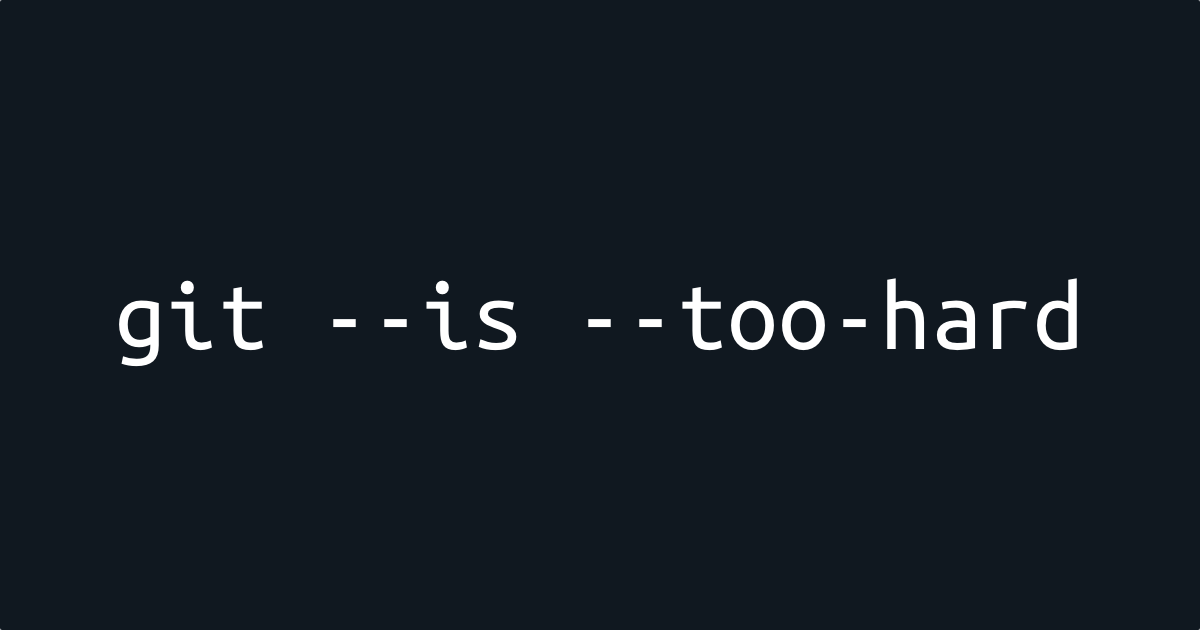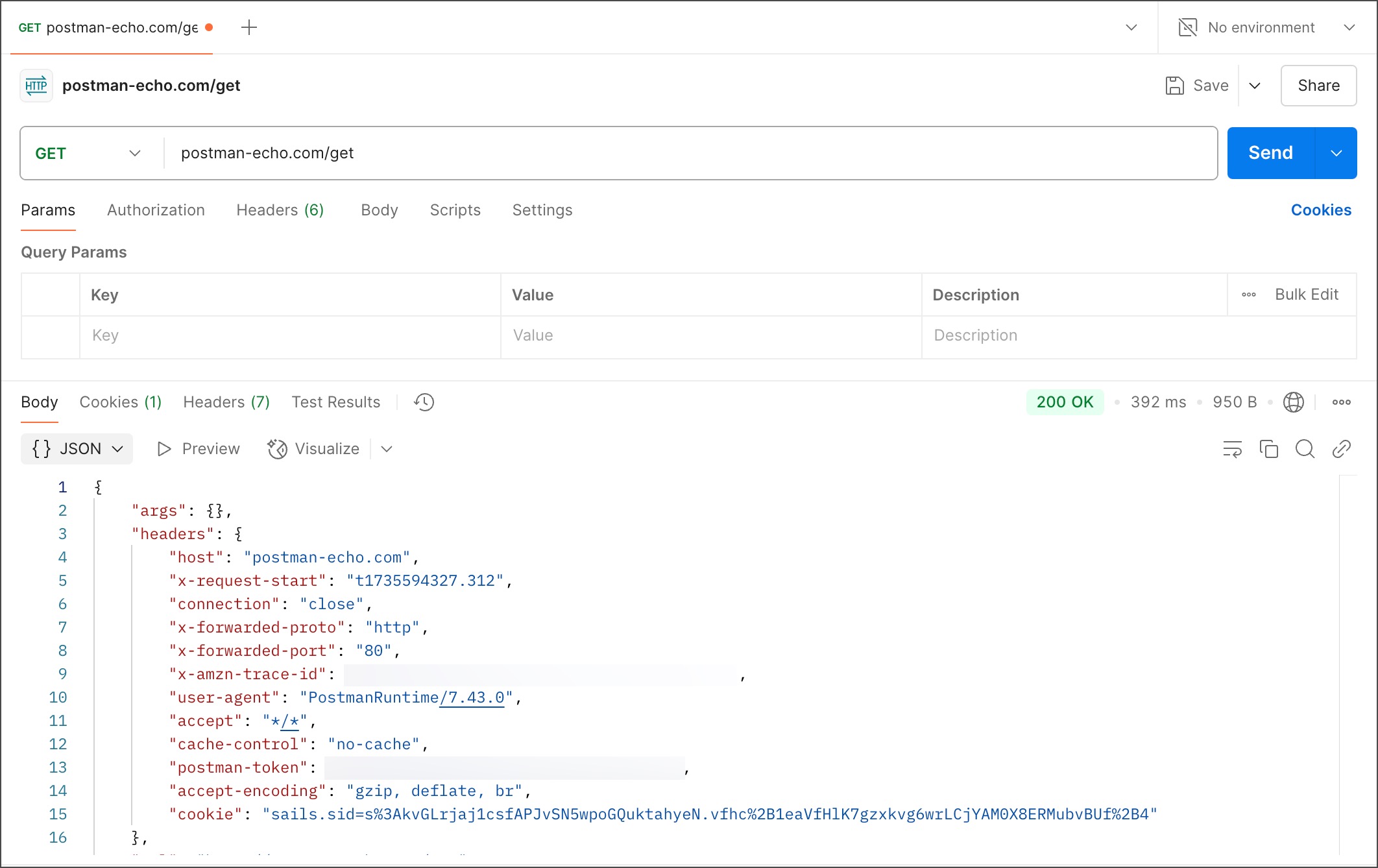Projects
-
I'm on a Podcast
Last month I had the honor to appear on the “Her Corporate Compass” to talk about my approach to asking questions. (previously, and previously).
You can listen to it here:
If Spotify isn’t your thing, it’s also on Apple Podcasts here.
I will be completely transparent: I’m still a little scared of the sound of my own voice, so I have not listened to this entire episode yet. However, I have listened to Elhannah’s previous episodes and so I know that she did a great job, and any problems or issues are on me, not her. :)
Thank you so much Elhannah for having me!
-
Secrets of the Git Commit Hash

I attended an online presentation recently about very specific ways git can get messed up. To be clear, git can get messed up in many ways, but this fascinating presentation, by Mike Street, was about just some of the ways we run into problems with git.
Have you ever gotten this message:
Updates were rejected because the tip of your current branch is behind its remote counterpart. If you want to integrate the remote changes, use 'git pull' before pushing again.This USUALLY means exactly what it sounds like (assuming that this message sounds like anything to you): The branch you were working on has changed on the remote, and before you push your changes to the remote, you should pull the new changes to your computer and integrate them, otherwise you might break something.
But how does git know that something has changed at the remote? Git does this by comparing commit hashes, the 40-character strings that uniquely identify a specific commit.
As I think I understand it, your git talks to the remote git and says, essentially, hey, I’ve got
develophere, and before I made my changes, it had the hashabc123.And remote git (on github or elsewhere) says, “Cool, yeah,
developwas at abc123 last time you pushed, so let’s go ahead and add your changesdef456.”But let’s say your coworker updated
developwhile you were working.Now
developpoints to a different commit hash (now callednew-work), and you get the above error.However!
This comparison can only occur because git is comparing commit hashes. The hash is made up of a bunch of information, and here I quote Mike Street’s presentation directly:
- the parent commit hash (or hashes, in the case of a merge)
- the commit message
- the commiter name and date of commit
- the author name and date of authorship (these can be different than the above)
- the file changes
- magic
(On a side note, if I understand this Stack Overflow answer correctly, creating this hash involves using the SHA-1 algorithm (at least) three times: the parent hash(es), the hash of each file that has changed, and the result of hashing the return of
git cat-file, which is what contains the ‘metadata’ about the commit. And then it’s all mushed together, I presume.)The upshot of all of this means that two commits that are functionally the same: same files changed, same changes within those files, etc., can still look different to git, because the hashes change whenever the metadata does. So the ‘updates were rejected’ error can occur even when there are no true updates.
And this is why if you do:
git commit -m "do something" git push git commit --amend #change the commit message git pushyou will get the original error message:
Updates were rejected because the tip of your current branch is behind its remote counterpart. If you want to integrate the remote changes, use 'git pull' before pushing again.The two commits are the same but git doesn’t know that!
At this point, if you are sure you are the only person working on this branch, you could do a
git push --forceto resolve the issue. But it’s better to avoid this problem in the first place, by not amending commits that have already been pushed to the remote.We will see similar issues when rebasing (because the parent commit hash, as well as the commit date, could change).
The short version of this insight is: the commit hash updates every time the commit, including the metadata, changes.
Now you know!
This presentation did not fundamentally change the way I use git: the way to avoid this problem was, and remains, “do not amend commits that have already been pushed to the remote.” But it did help me understand why this is the case. Thanks, Mike!
Resources
The presentation was part of Code and Coffee: A Virtual Coffee Conference. I believe that the individual talk will be posted shortly, but for now it is available as part of the livestream recording here, starting at about the 9 minute mark.
-
The Joy of Leetcode
“This is what happens if you do very well on coding puzzles,” an acquaintance texted me last year during Advent of Code. I honestly assumed the link included in the text was gonna go to some meme of a skeleton dead in front of their computer.

But nah, he wanted to link me to a Youtube video touting some Leetcode genius who had solved more than 3,000 problems on the site and landed a job at Google. And of course, getting a new job is why most people do Leetcode. As long as technical screens exist (which might not be that much longer, thanks ChatGPT), there will be people trying to prep for them on leetcode and leetcode-like sites.
That said, I have been doing a little leetcode here and there, despite not being on the job market. That sounds a little crazy to say out loud. Why would anyone want to put themselves through this torture?
Women and Gender eXpansive Coders DC has a monthly “Craft n’ Crush Your Coding Interview” event where a few folks get together and solve these toy problems in a supportive environment.
The organizer, Melissa, structures the events so that everyone has 15 minutes to solve the same problem, then we spend 15 minutes discussing our approaches and solutions, and then take a 15-minute crafting/chat break. It’s a really supportive environment. And there’s yarn.
Honestly, for some people the promise of crafts might be enough to get them to come. I’ve really been looking forward to the coding parts, though.
-
The fundamental problems and data structures in a Leetcode easy (the organizer mostly chooses easies) are often things I know about but don’t necessarily work with on a day-to-day basis. Can’t remember the last time I worked with a linked list outside of a Leetcode problem, but it’s probably a good thing to remember that such a structure exists.
-
Since everyone coming to this meetup has different skills and backgrounds, there are as many different solutions as there are people. I’ve often felt pretty proud of a solution of mine until another person comes along with an even better optimization. These are fantastic learning opportunities! Also, everyone uses their language of choice so I often get to go “Oh, Ruby can do that?”
-
I’m also not ashamed to admit I’m a tad bit competitive, so this meetup scratches that itch for me.
-
Plus, I’m making progress on a very cool cowl.
If you’re a woman in tech in the DMV, I hope you’ll check out WGXC DC’s Craft-n-Crush series. And if you’re not in the area, perhaps you would be inspired to start your own Craft n Crush in your region?
-
-
Save Time With Postman's Pre-Request Scripts

Postman is an incredibly powerful tool for prototyping and testing APIs. If you ever find yourself making any kind of API request to any service (regardless whether it’s one you built or one you use), I really think you should be using Postman.
In this post I’m going to share how to use pre-request scripts to make Postman even more powerful.
One common pattern in many web APIs is exchanging an API key for a token. In short:
A developer generates an API key once. Then, using that key (and possibly other secret credentials), they can call a token endpoint, which reads the key and returns a short-lived bearer token. The bearer token usually expires after a short time, such as an hour, at which point the token must be refreshed.
As an example, take a look at the docs for Shopify’s API:
Step 1: Ensure you have a valid session token. Your app’s frontend must acquire a session token…
Step 2: Get an access token. If your app doesn’t have a valid access token, then it can exchange its session token for an access token using token exchange.
In this scenario, a developer makes a POST request to
https://{shop}.myshopify.com/admin/oauth/access_tokenwith her app’s API key and a few other secret parameters, and receives back this response:{ "access_token": "f85632530bf277ec9ac6f649fc327f17", "scope": "write_orders,read_customers", "expires_in": 86399, "associated_user_scope": "write_orders", "associated_user": { "id": 902541635, "first_name": "John", "last_name": "Smith", "email": "[email protected]", "email_verified": true, "account_owner": true, "locale": "en", "collaborator": false } }She now has an access token with two scopes that expires in 86399 seconds, or just under one (normal) day.
If you’re a user of whatever this Shopify app is meant to do, all this happens invisibly, under the hood. But if you’re a developer testing against the Shopify API, you probably have to do this token exchange daily, manually. First make a POST request to the token endpoint, then retrieve the result, then paste the token into the API call you actually want to make.
And many services provide tokens with much shorter expirations – an hour or even a few minutes.
You could save a separate request in Postman and remember to hit the token endpoint before you make a new request, or you could use a pre-request script to chain the two calls together. Here’s how it’s done.
-
Some Tips for Working With the Google Sheets Java SDK
At work, I’ve been working on a project that involves reading and writing data to and from a Google sheet. One could argue about the wisdom of using Google Sheets to hold any data, but for the sake of this post (and my sanity) let’s assume that the business requirements to use Google Sheet are watertight.
So I have to be able to talk to Google Sheets through my Java service, and of course Google has a Sheets SDK that we can use. Their quickstart tutorial assumes a different method of access/authorization than I expect to use, but that’s okay.
For my purposes, I needed to create a project in my company’s GCP account, and a service account that had access to that project. That gives me a set of credentials in JSON that we can store anywhere (we’re using AWS paramstore, because this is a two-cloud-provider kinda project!), but in order to access a specific sheet we also have to share that sheet with the service account. I bolded that because I’ve forgotten that step multiple times throughout the lifespan of this project.
Repeat: the service account credentials, even when scoped to SPREADSHEETS:ALL, still cannot access individual spreadsheets in your organization’s workspace unless you share the spreadsheet with them. Seems kinda cray that we have to treat the service account like a person in order to access resources, but I guess Google ended up picking a person-based model years ago and now they’re probably stuck with it.
 (This is not a real example.)
(This is not a real example.)Once you’ve shared your sheet you can start talking to it in Java. I built credentials like this:


